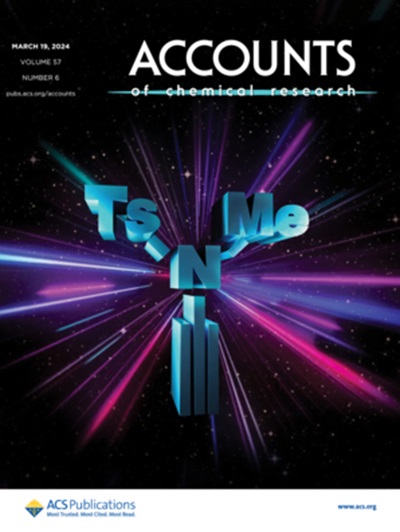Atomically Dispersed Metal Interfaces for Analytical Chemistry
IF 16.4
1区 化学
Q1 CHEMISTRY, MULTIDISCIPLINARY
引用次数: 0
Abstract
Engineering sensing interfaces with functional nanomaterials have aroused great interest in constructing novel analytical platforms. The good catalytic abilities and physicochemical properties allow functional nanomaterials to perform catalytic signal transductions and synergistically amplify biorecognition events for efficient target analysis. However, further boosting their catalytic performances poses grand challenges in achieving more sensitive and selective sample assays. Besides, nanomaterials with abundant atomic compositions and complex structural characteristics bring about more difficulties in understanding the underlying mechanism of signal amplification. Atomically dispersed metal catalysts (ADMCs), as an emerging class of heterogeneous catalysts, feature support-stabilized isolated metal catalytic sites, showing maximum metal utilization and a strong metal–support interfacial interaction. These unique structural characteristics are akin to those of homogeneous catalysts, which have well-defined coordination structures between metal sites with synthetic or biological ligands. By integrating the advantages of heterogeneous and homogeneous catalysts, ADMCs present superior catalytic activity and specificity relative to the nanoparticles formed by the nonuniform aggregation of active sites. ADMC-enabled sensing platforms have been demonstrated to realize advanced applications in various fields. Notably, the easily tunable coordination structures of ADMCs bring more opportunities to improve their catalytic performance, further moving toward efficient signal transduction ability. Besides, by leveraging their inherent physicochemical properties and various detection strategies, ADMC-enabled sensing interfaces not only achieve enhanced signal transductions but also show diversified output models. Such superior functions allow ADMC-enabled sensing platforms to access the goal of high-performance detection of trace targets and making significant progress in analytical chemistry.

分析化学中的原子分散金属界面
具有功能纳米材料的工程传感界面已引起人们对构建新型分析平台的极大兴趣。良好的催化能力和物理化学性质使功能纳米材料能够进行催化信号转导,并协同放大生物识别事件,以实现高效的靶标分析。然而,进一步提高它们的催化性能对实现更敏感和选择性的样品分析提出了巨大的挑战。此外,纳米材料原子组成丰富,结构特征复杂,这给理解信号放大的潜在机制带来了更多的困难。原子分散金属催化剂(ADMCs)是一类新兴的非均相催化剂,具有载体稳定的分离金属催化位点,具有最大的金属利用率和较强的金属-载体界面相互作用。这些独特的结构特征与均相催化剂相似,均相催化剂在金属位点与合成或生物配体之间具有明确的配位结构。admc结合了多相和均相催化剂的优点,相对于活性位点不均匀聚集形成的纳米颗粒,admc具有更强的催化活性和特异性。admc传感平台已经被证明可以在各个领域实现先进的应用。值得注意的是,admc易于调节的配位结构为提高其催化性能带来了更多的机会,进一步向高效的信号转导能力迈进。此外,admc传感接口利用其固有的物理化学特性和多种检测策略,不仅实现了增强的信号转导,而且显示出多样化的输出模型。这些优越的功能使admc传感平台能够实现痕量目标的高性能检测,并在分析化学方面取得重大进展。
本文章由计算机程序翻译,如有差异,请以英文原文为准。
求助全文
约1分钟内获得全文
求助全文
来源期刊

Accounts of Chemical Research
化学-化学综合
CiteScore
31.40
自引率
1.10%
发文量
312
审稿时长
2 months
期刊介绍:
Accounts of Chemical Research presents short, concise and critical articles offering easy-to-read overviews of basic research and applications in all areas of chemistry and biochemistry. These short reviews focus on research from the author’s own laboratory and are designed to teach the reader about a research project. In addition, Accounts of Chemical Research publishes commentaries that give an informed opinion on a current research problem. Special Issues online are devoted to a single topic of unusual activity and significance.
Accounts of Chemical Research replaces the traditional article abstract with an article "Conspectus." These entries synopsize the research affording the reader a closer look at the content and significance of an article. Through this provision of a more detailed description of the article contents, the Conspectus enhances the article's discoverability by search engines and the exposure for the research.
 求助内容:
求助内容: 应助结果提醒方式:
应助结果提醒方式:


